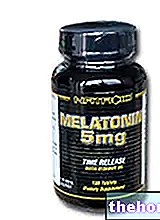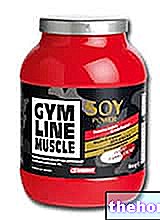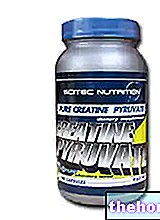So is Ratania
Ratania (Krameria triandra Ruitz and Pavon, fam. Krameriaceae) is the common name of a branched shrub native to the Bolivian and Peruvian Andes, where it finds its ideal habitat between 900 and 3000 meters above sea level.

Property
The drug, consisting of the dried roots of Ratania, is characterized by its richness in condensed catechinic tannins; for this reason, it has interesting astringent, anti-inflammatory, haemostatic and anti-diarrheal properties.
In vitro, rhatany root has shown interesting bacteriostatic, bactericidal, mycostatic and fungicidal properties. From the communion of these activities comes the indication for the use of drugs, in the form of tincture, in the treatment of gingivitis and stomatitis (inflammation of the mucous membrane of the mouth). For this purpose, the official Italian pharmacopoeia reports in its formulary a preparation based on myrrh (50% m / m) and rhatany (50% m / m). Furthermore, in recent years, the use of lipophilic extracts of rhatany has spread - rich in neolignans and nor-neolignans with a benzofuranic structure - in dermatological and gynecological products useful in the presence of bacterial and fungal diseases, such as candidiasis, trichomoniasis and bacterial vaginosis.
According to the European Pharmacopoeia IV, myrrh tincture is prepared with one part of myrrh for every 5 parts of ethanol (ethical alcohol) at 90% V / V. On the market you can also find rhatany tinctures 1: 5 in 70% alcohol, prepared according to the dictates of the FUI, which provides, among other things, a tannin content equal to or greater than 2%. The rhatany tinctures can also be used , directly brushing the parts to be treated, or diluted in water for gargling.
External use
In the form of ointment for external use, Ratania is used in the treatment of anal and mammary fissures, hemorrhoids and anal fistulas.
Ratania in Cosmetics
In cosmetics, Rhatany is used - together with other plant extracts with the same pigmenting properties (walnut, aloe, St. John's wort) - in products intended to strengthen the tan; in addition to giving the skin a bronze color - given the presence of phlobaphenes (red Ratania), which are formed from tannins during storage - rhatany could contribute to the protection from solar radiation, in particular thanks to the aforementioned lipophilic fraction of the phytocomplex (neolignans and nor-neolignans).
Ratany is used as a functional agent in cosmetics against oily, asphyxiated skin with the presence of blackheads. Still in the cosmetic field, the aforementioned use in toothpastes and mouthwashes against inflammation of teeth and gums is recalled. Ratany can also be used as an antiperspirant agent in the formulation of deodorant products; finally, due to the moderate content of mucilage, for use exterior has soothing and anti-reddening properties.
Internal use
For internal use, in the form of an infusion (20 g of pulverized root per liter, filter and drink half a glass, 3-4 times a day), rhatany is indicated as an antidiarrheal, in venous insufficiency, in case of capillary fragility and in hemorrhoidal symptoms.
In the form of a decoction (let 50 g of pulverized root per liter boil for a quarter of an hour), rhatany is indicated for irrigations, enemas and foments.
The association with plants such as birch, witch hazel and tormentilla strengthens its astringent properties.
storage
The drug must be stored in the dark, in well-closed containers; in fact, as indicated, as the storage period increases, the percentage of tannins decreases, given the tendency to condense with the formation of insoluble phlobaphenes (red from Ratania).
Side effects
Precautions, drug interactions and contraindications
Contact your doctor if diarrhea persists after three to four days of treatment with rhatany for antidiarrheal purposes. Given the absence of reliable data on the toxicity profile in such conditions, its use in pregnancy, lactation and under 14 years is not recommended.
The use of herbal preparations, including those based on rhatany, can negatively interfere with the absorption of other supplements or drugs, increasing or decreasing their therapeutic effect. It is therefore recommended to take this remedy after at least 2-3 hours from taking medicines.
In sensitive patients, treatment with oral rhatany may cause episodes of nausea and vomiting, and increase gastric irritation.
Select plant Fir Acacia Acerola Sorrel Yarrow Yarrow Yarrow Aconito Adatoda Garlic Agnocasto Agrimonia Alchemilla Alkekengi Aloe Altea Witch Hazel Ammi or Visnaga Pineapple Andrographis Anemone Pulsatilla Angelica Anise Star Anise Japanese Star Anise Bitter Orange Bitter Areca Arnica Harpagophytum Arpagophyte Artemisia Asteragus Basil Asparagus Asparagus Peruvian Asparagus Asparagus Asparagus Hawthorn Boldo Borage Shepherd's Purse Boswellia Bucco Butea superba Cocoa Coffee Cajeput Calamus Calamus Marigold Camedrio Chamomile Roman Chamomile Camphor Cinnamon Ceylon Maidenhair Capuchin Artichoke Cardamom Cardiac Thistle Asian Thistle Carvi Cascara Cassia Catecu Catha Cabbage Celandine Chicory Centaurea Cinnamon Cypress Celandine Chives Cypress Coca Cola Colchico Combreto Condurango Comfrey Coriander Cranberry Barberry American Chrysanthemum Cumin Turmeric Damiana Digital Dioscorea Drosera Dulcamara Dunalilella Echinacea Eder a Ephedra Elenio Eleutherococcus Helichrysum Evening primrose Horsetail Alfalfa Erica Euphrasia Erisimo Escolzia Eucalyptus Farfara Farfaraccio Calabar bean Fenugreek Fennel Phytolacca Frangola Ash Fumaria Japanese Mushrooms Galega Ganoderma lucidum Garcinia Cambogia Mulberry Gentian Broom Ginkgo Ginkgo Guipana Guipana Gynestra Ginkgo Hibelia Gymnasium Hibiscus Guarulp St. John's Wort Horse Chestnut Ispaghul Hyssop Jaborandi Kava kava Konjac Laminaria Cherry Laurel Lavender Lemongrass Lespedeza Lovage Icelandic Lichen Lemon Flax Lippia Licorice Lobelia Hops Maca Marjoram Maize Mallow Manna Marrubio Marrubio d "water Matè Melaleuca Meliloto American Lemon balm Myrtle Myrama Walnut Nutmeg Walnut vomica Olive tree Meadowsweet Ononide Opuntia Oregano Orthosiphon Nettle Poppy Papaya Parietaria Feverfew Passiflora Chilli Perilla Periwinkle Phyllanthus Plantain Picrorhiza Pilosella Pino Pisci dia Podofillo Polygala Grapefruit Parsley Psyllium Pueraria mirifica Butcher's broom Pygeum Quassia Oak Rhubarb Ratania Rauwolfia currant Castor bean Rhodiola Rosehip Rosemary Rue Willow Sarsaparilla Sage Elderberry Sassafras Sedum Ergot Senna Serenoa Repens Soybean Solidago Tansy Taraxus Tamarind Tamarind Tamarind Tamarind Tamarindo Ursina Valerian Vanilla Mullein Verbena Veronica Viburnum Vinca Pansy Mistletoe Vine Withania Yohimbe Saffron Ginger Pumpkin Select disease Juvenile Acne Rosacea Tinnitus Tinnitus Aerophagia Tendon Affections Afonia Aphthae Algias Functional Halitosis Breastfeeding Allergy Anemia Anguish Anxiety Arteriosclerosis Asthrosis Asthrosis Arthritis Arthritis Men Sex Woman Blepharitis and Conjunctivitis Eye bags Bronchitis Gallstones Kidney stones Salivary stones Baldness Androgenetic Candida Fragile hair Caries Headache Cellulitis Motion sickness Cystitis C limaterio Cholecystopathy High cholesterol Ulcerative colitis Colonoscopy Contusions Hematoma Convalescence Couperose Depression Dermatitis Diaper dermatitis Diabetes Diarrhea Erectile dysfunction Dyslipidemia Dysmenorrhea Dyspepsia Disturbances of vision Hemorrhoids Epistaxis Herethism Heart disease Fever Fibromyalgia Gastro-intestinal disease Flatulence Hypertension Fibromyalgia Gastrointomnia Jaundice Laryngitis Renal lithiasis Toothache Sore throat Thinness Menopause Meteorism Mononucleosis Alzheimer's disease Crohn's disease Nausea Vomiting Obesity Dark circles Onychomycosis Osteoporosis Dry skin Periarthritis Piorea Low pressure Prostatitis Psoriasis Colds Breast fissures Anal fissures Gastro-nasal rhinitis Senescence Premenstrual Syndrome Sinusitis Quit smoking Overweight Fatty liver Constipation Stomatitis Stress Cough Triglycerides high Ulcer Burns Nails Brittle flashes Heat Warts Dizziness Properties herbal Tanning Abortive adaptogenic Aphrodisiac bittering analgesic anesthetic anorectics analgesic antacid anti-allergic anti-asthmatic Antibiotic catarrh Anticellulitiche anticonvulsant Antidiaforetiche antidiarrheal edematous anthelmintic antiemetic Antiemorroidarie antiphlogistic Antiidrotiche Antinevrotiche Antioxidants antipyretic antirheumatic antiscorbutic Antiseptic antispasmodic anti-uric Aperitive Flavoring Astringent Balsamic Bechiche Capillarotrope Cardiotonic Carminative Cathartic Caustics Healing Cholagogues Choleretic Dyes Decongestants Deodorants Purifying Diaphoretic Cleansers Disinfectants Detoxifiers Thirst quenching Diuretics Exciting Emetics Emmenagogues Emollients Hemostatic Energies Hepatoprotectors Expectorants Eupepticus Moisturisers Galactosensitizers lanti Hypertensive Hypnotic Hypoglycemic Hypotensive Irritants Laxatives Soothing Narcotic Nerves Nutrients Odontalgic Pectoral Purgative Revulsive Remineralizing Refreshing Rubefacient Scialagoghe Sedative Soporifugas Sneezing Stomachic Stomatics Narcotic Vascular Tightenitis




























